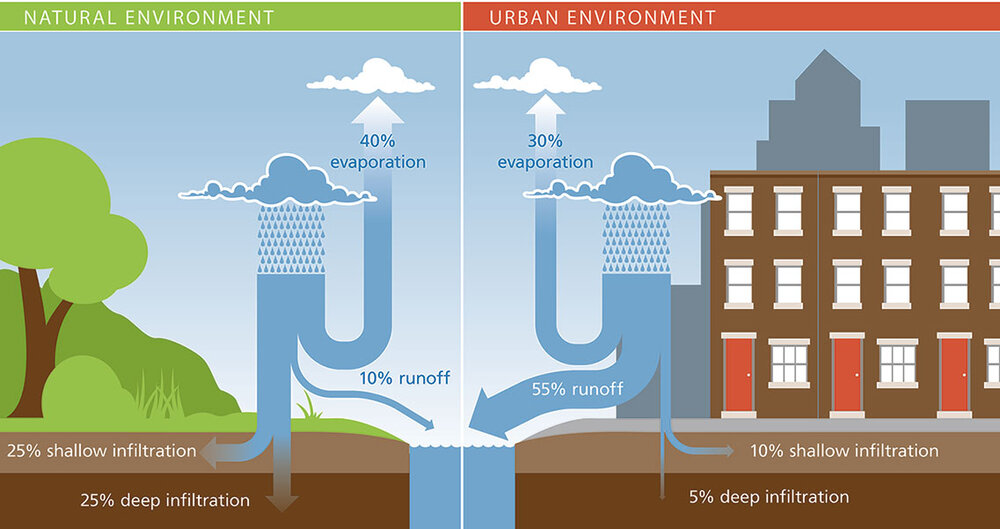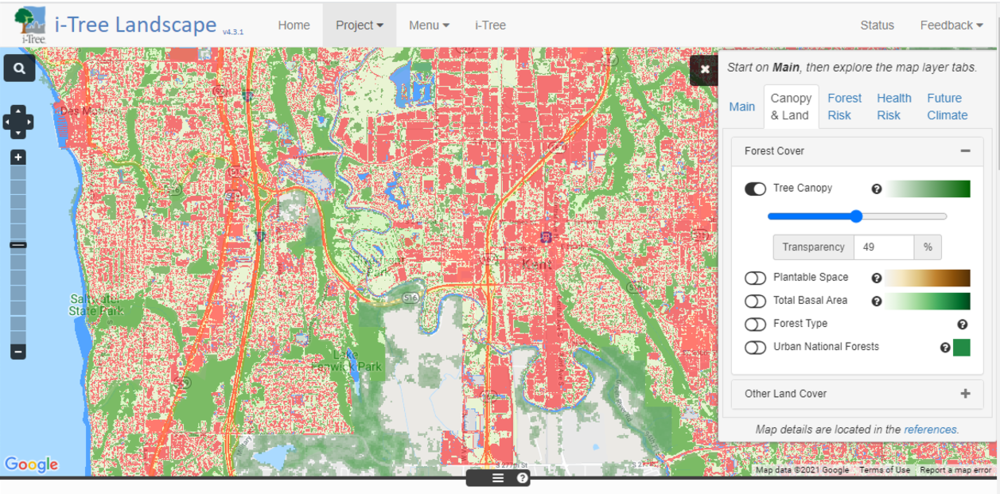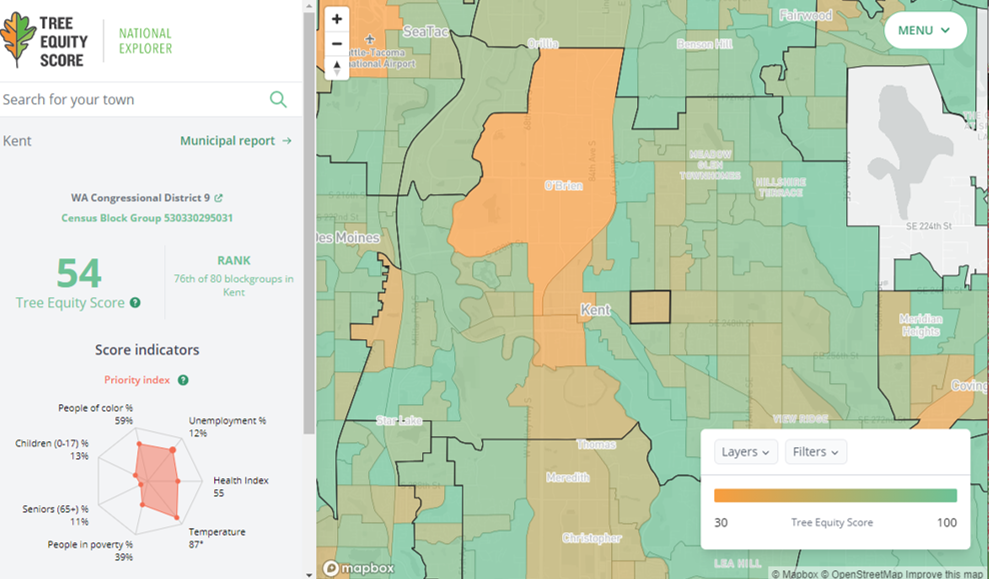By Craig Holland, Senior Director of Investment for Healthy Cities
and Jessie Israel, Puget Sound Conservation Director
Stormwater is a leading source of water pollution globally and is the only type of water pollution in the U.S. that is increasing. Much of this stormwater—or “runoff, ”often from parking lots, roads, roofs or other “impervious” surfaces—makes its way into stormwater retention ponds (ponds constructed to treat and store stormwater runoff), which number in the millions across the nation, before eventually flowing into our streams, reservoirs or bays.
To address this challenge—and this incredible opportunity—TNC and Opti, a technology company, began thinking of ways to use new, low-cost “smart” technologies to improve water quality by focusing on stormwater infrastructure. This thinking led to the creation of joint venture between TNC and Opti in 2018.
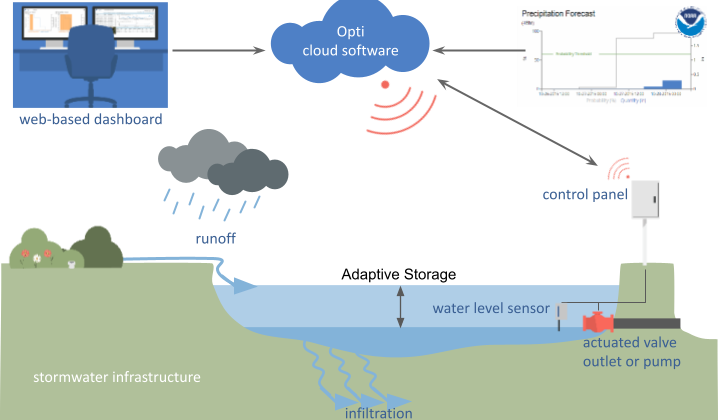
The joint venture, named Brightstorm, uses sensors and smart technology that analyzes weather forecasts and then proactively, remotely and autonomously controls water levels in stormwater retention ponds and other stormwater infrastructure. This approach, which allows stormwater to be held in the ponds for longer periods of time, has shown to produce significant and measurable improvements for water quality for two primary reasons:
-
First, the plants and soil in these ponds filter excess nutrients that degrade water quality and can be toxic to people and animals.
-
Second, more time in the ponds allows other pollutants—like heavy metals from cars, sediment, pesticides, herbicides or cleaning chemicals—to settle to the bottom of the ponds, which are periodically dredged and then the polluted dredge materials are safely disposed of.
On the flip side, this technology can help reduce flood risk for communities because the ponds can be emptied before big storms to create more flood storage. Additionally, flows from this smart infrastructure are managed in ways that more closely mimic natural conditions, which improves habitat for plants and animals and can reduce downstream erosion, often by 50 percent or more.
A Brighter Future for Stormwater in Washington
In 2021, Opti piloted several projects at stormwater retention ponds in Redmond. Monitoring and modeling at these sites show these “smart” ponds are performing twice as well as the existing ponds when it comes to the State of Washington’s flow-duration requirements—that is, it would take a pond twice the size of an Opti smart pond to meet these flow guidelines. Essentially, these requirements call for flows that are comparable to pre-development conditions, and they’re often aimed at reducing big pulses of water during storm events. Given this performance, Washington’s Technology Assessment Protocol-Ecology program recently approved Opti’s smart pond approach, prompting the City of Redmond to implement Opti’s software to improve flow duration at several of its stormwater retention ponds.
Brightstorm’s Win-Win-Win Appeal
TNC started this joint venture because Brightstorm’s mission to improve water quality and wildlife habitat and reduce flood risk matches TNC’s. We partnered with Opti because they’re a leader in this technology space, and we both recognize that the millions of stormwater retention ponds in the U.S.—combined with other stormwater infrastructure—gives us the opportunity to work at scale across the nation.
Pictured here is smart, solar-powered Brightstorm sensors and equipment installed at a stormwater retention pond. © Opti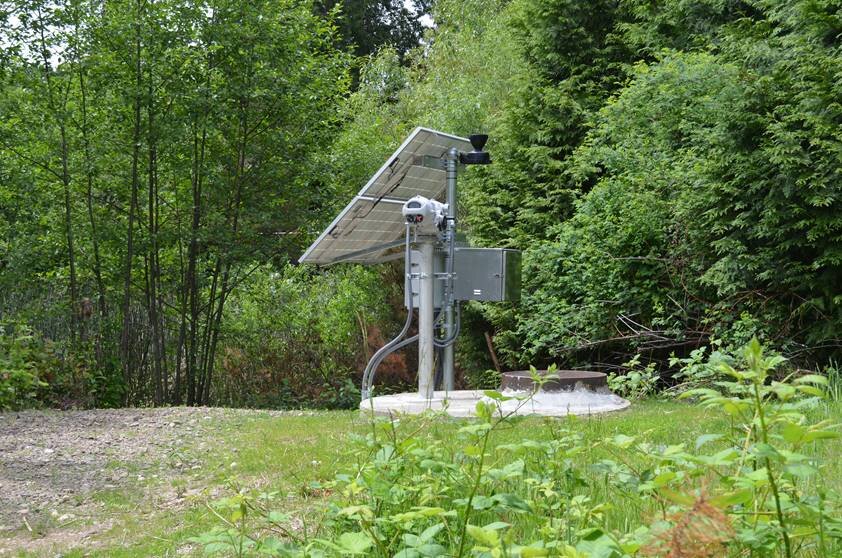
Most of our efforts to date and the prospects we’re exploring are on private land. That’s important because about 95 percent of urban and suburban land is privately owned. For instance, we installed this technology at three pilot project stormwater ponds owned by Walmart in Maryland. The appeal to Walmart was simple. They were able to make significant environmental improvements at and downstream of these sites, and they did so at no cost. That’s right, $0. Instead, the Maryland Department of Transportation (MDOT) funded the upgrades to Walmart’s ponds.
MDOT did so because state agencies—and companies—are required when they develop land or build roads or parking lots to meet local, state and federal water-quality standards outlined by the U.S. Environmental Protection Agency’s Clean Water Act. When they can’t do so on-site alone, they purchase credits to mitigate the effects of their development. MDOT purchased from Brightstorm credits that were created by the improvements in water quality at Walmart’s ponds.
>
“These smart ponds are another innovative way we’re working to improve the communities we serve. We’re being responsible stewards of the environment while at the same time helping protect the infrastructure that supports our hard-working residents and businesses.”
>
“Brightstorm allows us to deal with an acre of stormwater runoff for less than $40,000. The traditional approach cost us $150,000 an acre. So, this is going to save taxpayers tens of millions of dollars.”
Every party involved—including the environment itself—benefitted. This was truly a win-win-win proposition and project, and the excitement at Brightstorm is that this is an approach that can be replicated thousands, if not tens or hundreds of thousands, times over across the U.S. as we work to address the only growing source of water pollution here and around the world.
Beyond our vast experience tied to water quality projects, a tremendous value TNC brings to the table is financing for the work. Essentially, we shift the risk to us and provide public agencies with a fully packaged credit that is based on performance in terms of price, pollution, flows, etc. Clients like MDOT only pay if we deliver what we outlined at the onset. But because of our firm, scientific-backed belief in this work and the results it produces, it’s a risk we’re willing to take, especially when we’re able to accelerate meaningful projects that might otherwise take years to get off the ground.
How does retention time help water quality?
A typical city block generates more than five times the stormwater runoff of a forested area of the same size. Just 10 percent of impervious cover (e.g. paved parking lots or roads) in a watershed negatively affects a stream’s natural flow and functions. And when a stream is surrounded by 25 percent of impervious cover, it loses its ability to meet habitat, water quality and biological diversity standards. The main culprits behind this degradation are pollution in the runoff and the speed at which the stormwater enters streams, as nature itself doesn’t have time to filter out the excess nutrient pollutants and most other pollutants can’t settle out due to the speed of the flow.
